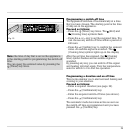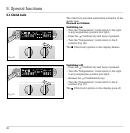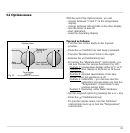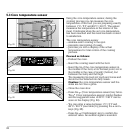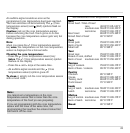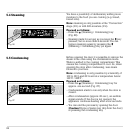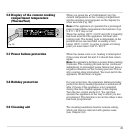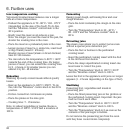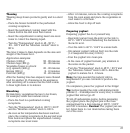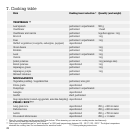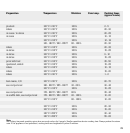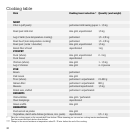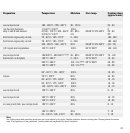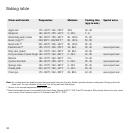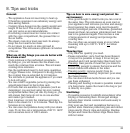
27
Thawing
Thawing deep frozen products gently and in a short
time.
– Place the frozen foodstuff in the perforated
cooking receptacle.
– Insert the perforated cooking insert with the
frozen food in the 2nd level from below.
– Insert the unperforated cooking insert one level
lower to collect the thawing liquid.
– Turn the “Temperature” knob to 45 - 50°C /
115 - 120 °F and the “Moisture content” knob to
80 %.
The time it takes to thaw depends on the size and
weight of the frozen food.
Application examples:
Chicken (1000 g) 55 - 65 minutes
Chicken legs (400 g) 30 - 35 minutes
Vegetable frozen in a block
(e.g. spinach) (400 g) 20 - 30 minutes
Berries (300 g) 8 - 10 minutes
Fish fillet (400 g) 15 - 20 minutes
After the thawing time has elapsed, leave thawed
food for another 10-15 minutes in the appliance
after switching off to ensure that the food is able
to thaw right down to its interior.
Blanching
By blanching, vegetables that are to be frozen,
for example, retain their natural colour.
– Place the food in a perforated cooking
receptacle.
– Turn the “Temperature” knob to 100°C / 210°F
and the “Moisture content” knob to 100 %.
– As soon as the temperature has been reached,
place the cooking receptacle in the second level
from below and place the unperforated cooking
receptacle one level lower.
– After 1-2 minutes, remove the cooking receptacle
from the oven again and place the vegetables in
iced water to cool them.
– Allow the food to drip off well.
Preparing yoghurt
Preparing yoghurt the do-it-yourself way.
– Heat milk (except long-life milk) on the hob to
90 °C / 195 °F to avoid disturbing the bacteria in
the lactic acid.
– Cool the milk to 40 °C / 104°F in a water bath.
– Stir natural yoghurt (without fruit) into the milk
(1-2 teaspoons for every 100 ml).
– Pour the yoghurt into clean jars.
– In the case of yoghurt ferment, pay attention to
the notes on the packet.
– Turn the “Temperature” knob to 45°C / 115°F and
the “Moisture content” knob to 80 %. Allow the
yoghurt to mature for 4 - 6 hours.
Note: the time needed for maturity will be
lengthened if you use cold milk to produce the
yoghurt.
On completion, place the yoghourt in the fridge!
Tip: before heating the milk, add skimmed milk
powder (1 - 2 tablespoons for every litre) to obtain
yoghurt that will not go off.
To kill off undesirable germs, before preparing
the yoghurt place the yoghurt jars in the oven
compartment for a few minutes at 100°C / 210°F
and 100 % moisture. Caution! The yoghurt jars are
hot. Allow them to cool down before taking them
out of the oven.



